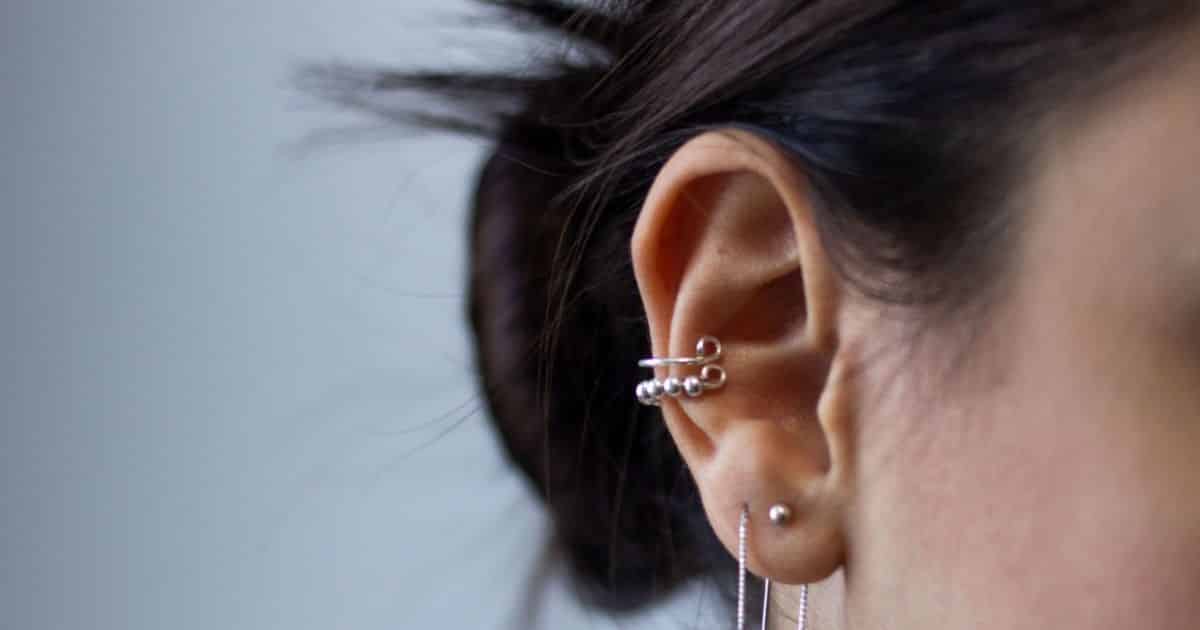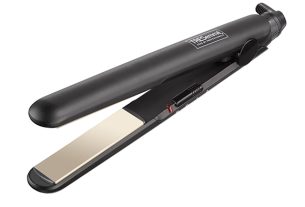Are you in doubt about how or when to pierce your ears? Although the procedure is common, it is necessary to take some precautions when carrying it out.
The practice of ear piercing is one of the most common practiced in Brazil. Since childhood, adorning your ears with earrings and in the future adding others through piercings continues to be an excellent accessory alternative. Making a second hole, adding rings to the cartilage or other points in the region became a mode of expression. However, in order to perpetuate the habit, some care must be taken when changing your look.
Above all, care not only concerns the precautions of the newly made wound, but also the fact that the holes influence the body’s balance points. Only on the ear are there 5 acupuncture points, used for medical purposes, which affect the entire nervous system. There are even cases of people feeling dizzy when their ears are pierced, or recognizing some heightened sense. After all, everything that is done in any region affects the body, even if minimally.
Even so, it is essential to take into account everything that must be done to contribute to a beautiful piercing and a wound without adverse reactions. Check below all the precautions that must be taken when piercing your ear, as well as information about the different regions that can be used, where the process can be done and with whom.
How to pierce your ears?
Currently, there are some great and reliable options available for those who want to pierce their ears safely and ensure their appearance. It is crucial to remember that any attempt to carry out the process using methods that are not recommended may be enough to cause inflammation and other complications. Thus, taking several precautions should come first. Each ear piercing method has its pros and cons, so choosing the best one for you is the right path.
1. Piercing the ear with a needle
This is the most amateur way of drilling the hole, and requires a lot of attention. The method is not highly recommended, as there are several factors that must be taken into consideration, such as possible inflammation and infections. It is common that, when carrying out the process at home, simple needles are used, which can cause some discomfort when fitting the jewelry afterwards, as the hole will still be painful.
2. Piercing your ear with a pharmacy gun
When it comes to piercing your ear, doing it using a pharmacy gun is one of the most popular methods of all, as well as being considerably safer. However, the process has fallen into disuse over the years, as the pharmacy drilling machine has become increasingly obsolete. The reason is that the pistol material is made of plastic, which can cause contamination if it comes into contact with the hole.
Likewise, the loud noise of the machine can be extremely irritating and scare anyone who is currently having their ears pierced. One of the positive points of the pharmacy gun, however, is the speed and ease of the process, as everything is done in a second and the earring is already inserted into the machine, which also makes everything less painful.
3. Piercing the ear with a piercing needle
Finally, using a piercing needle to pierce your ear is the best and safest method. Normally the process is carried out in dedicated piercing studios, with professionals in the field. Furthermore, the needle is always completely sterilized, which prevents any infection. Its hole in the middle allows the earring to be fitted and inserted into the ear as soon as it is pierced, with the maximum precision required. The only caveat to the method is the pain level, which may be slightly higher due to the thickness of the needle.
There are also acupuncture clinics, which are becoming a popular place to get your ears pierced. The reason is the precision of the professional who performs the feat, as the acupuncturist understands everything about the points in the region and how they should affect the rest of the body. Drilling, after all, should not cause any impact on the body. It is common for the hole to be made by machine or manually in clinics.
Choosing jewelry when piercing your ear
An extremely important detail when piercing your ears must be the choice of jewelry. There are thousands of possibilities, mainly for the second, third or fourth hole, as well as other regions that will be decorated. It is common for the earring that will be used to be inserted at the time of piercing, but it is also possible to change it after the healing period, which must be respected. After all, the type of jewelry chosen directly interferes with good wound healing.
1. What will be the material of the jewelry?
This is one of the first precautions that should be taken when choosing an earring. The material directly influences healing, and piercings of dubious origin can be responsible for inflammation, infections and even keloids. For those who are allergic to certain materials, this must also be taken into account. Typically, the most recommended jewelry is made of titanium, surgical steel and gold above 14 carats, which do not contain nickel, or which have a low dosage of the substance.
2. What will its format be?
Firstly, it is important that the jewelry is rounded, this way, it will be more difficult for the earring to get tangled in hair, clothes or surfaces, damaging the hole and inflaming the wound. The tip is valuable for both earrings and piercings, which tend to snag more easily due to their size. In this sense, ball and pearl earrings are a good choice.
3. What size will it be?
Finally, size is also an essential detail, as heavier jewelry can make the healing process more difficult, and larger jewelry can make it easier for the earring to be pulled out and hurt the ear. Therefore, the smallest possible and most discreet earrings should be taken into account, so that, after the piercing has completely healed, other accessories can be used.
Care after ear piercing
Once you’ve finally decided what the jewelry will be, how and where the piercing will be done, and all the other important details to ensure a hassle-free process, it’s time to take care of the ear piercing. All precautions must be followed strictly, paying extra attention to the region so that problems such as inflammation and keloids are not a reality.
1. Clean the area
Cleaning the region is essential to ensure that there is no wound infection. It is necessary to carry out daily cleaning during the healing period, eliminating any residue that could interfere with the process. This care should mainly be carried out in the first month after the piercing, which is when the ear will be most sensitive and susceptible to even rejection by the body.
First of all, you need to clean your hands, preferably with antiseptic soap. Then, with cotton, gauze or swab dipped in saline solution, it is necessary to gently clean the area around the piercing, in addition to cleaning the jewelry. Once this is done, just let the area dry. These steps should be followed 2 to 3 times a day. During the bath, it is possible to perform slight rotation movements on the jewelry, thus detaching it from the skin and helping with healing, but only during the bath.
2. Do not remove the jewelry before healing
It is crucial to wait for healing time before deciding to change the jewelry. The ideal time is 6 weeks: this way, any risk of inflammation will be minimal, and the change can be made without problems. Always remember to never purchase low quality earrings.
3. Do not use products that are not indicated when piercing your ears
If you performed the drilling with a professional, responsible for guiding you throughout the process, avoid using any product in the region that has not been recommended. On the internet, for example, there are many recipes for homemade products to help ear healing, but of dubious origin. Any allergy can cause unwanted consequences for the skin and your health.
4. Avoid diving after ear piercing
Sea and pool water are enemies of healing. During the period it takes for the ear piercing to heal completely, avoid diving into sea or pool water, which can lead to serious infections and inflammation, as well as allergic reactions. If it is necessary to carry out any water activity during the first period of the 6 weeks, consider purchasing a cap.
5. Be careful with your diet
Just like when getting a tattoo, you need to be very careful about what you eat during the first few days after getting the piercing. Therefore, avoid eating little meat, extremely fatty foods, fried foods or chocolate, which harm the healing process. Replace the menu with fruits, vegetables and greens, as well as lean and grilled meats. The less fat, the better. Excessive salt and sugar are also not recommended, as both increase the chances of inflammation.
6. Be careful with your clothes, hair and sleeping position
When getting dressed, take greater care when placing items of clothing over your head, for example. Any tissue that gets caught around the earring can affect healing, enlarge the hole and also cause considerable discomfort. During the first few weeks, opt for smooth fabric pieces, such as satin and silk, so that you don’t run the risk of getting them caught in the jewelry.
The same care should be taken when taking care of your hair. When brushing your hair, make slow and delicate movements, paying extra attention to the area close to the ear. If the strands are very long, consider putting them in braids or buns at bedtime, so that they don’t get caught in the ear. And when sleeping, prefer to lie on your back, or in any way that does not result in the earring area being pressed against the mattress or pillow.
7. Avoid sun exposure
Did you know that ultraviolet rays can also interfere with the healing process? When leaving the house, keep in mind that you need to protect the puncture area as much as possible from the sun. So, opt for a hat, being careful that the piece doesn’t press against your ear.
If you liked this article about ear piercing, consider taking a look at Tongue Piercing – Healing, care, types and inspiration
Sources: Waufen, Piuka, Ana Maria Braga

Sign up for our newsletter and stay up to date with exclusive news
that can transform your routine!
Warning: Undefined array key "title" in /home/storelat/public_html/wp-content/plugins/link-whisper-premium/templates/frontend/related-posts.php on line 12
Warning: Undefined array key "title_tag" in /home/storelat/public_html/wp-content/plugins/link-whisper-premium/templates/frontend/related-posts.php on line 13




